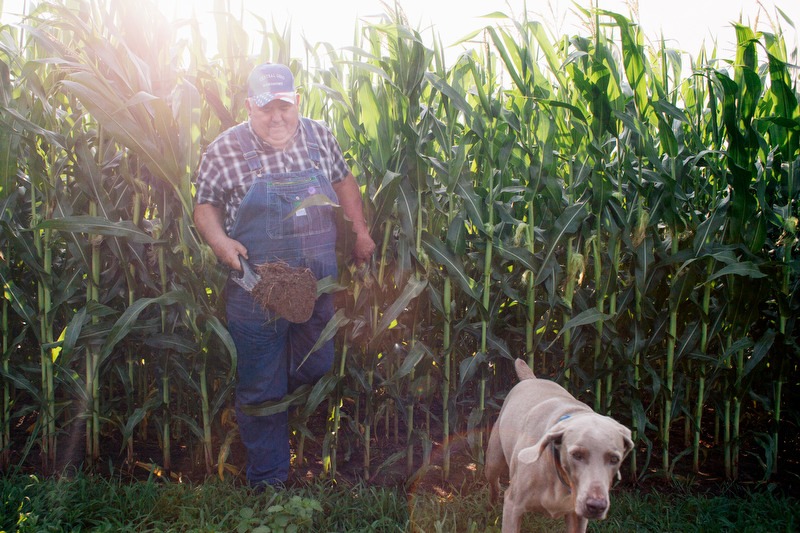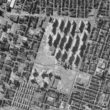(Source: Mother Jones)
How can the world attain a decent, sustainable lifestyle, one that doesn’t wreck our land, water, and air? In fact, we already have the necessary technology, technology that can create more and better jobs. Here are examples from farms, cities, and businesses.
Back in 1985, economists Yujiro Hayami and Vernon Ruttan estimated the agricultural land and labor productivity of 44 nations. Their findings were stunning. In the developed world, farms in densely populated countries produced far more per acre, and far less per worker. Farms in Taiwan averaged about 16 times the output per acre of U.S. farms, using about 23 times as much labor. Closer to home, farms in the Netherlands produced about 12 times as much per acre as U.S. farms, using about two and a half times as much labor. There’s nothing “primitive,” however, about Taiwanese or Dutch agriculture. The Taiwanese use tractors the size of lawn mowers, multiple and mixed crops, and heavy fertilizer—though far less per unit of output than the United States.
| We already have the technology to produce and live and work in ways that vastly reduce stress on natural resources and simultaneously create more jobs. The obstacles are political. |
Of course, since the United States has abundant high-quality agricultural land, U.S. farmers use land extravagantly. They’re further encouraged by subsidies. For example, consider the tomato harvester. In the 1950s, federally funded researchers at the University of California-Davis developed both the machine and the special tough-skinned processing tomatoes that go with it. The giant harvester itself rolls along wide-spaced rows, digging up whole plants and shaking the tomatoes onto a conveyor belt, where a small crew tosses out those that are green or smushed. The system saves labor by using much more land, water, fertilizer, pesticides, and fuel.
But even in the United States, alternatives are possible. In Ohio, corn and soy farmer David Brandt plants with a seed drill. He keeps down weeds with a diverse mixture of cover crops, which he then mows to mulch the soil for the winter. The approach takes more labor, especially intelligent supervision, as Brandt must carefully monitor conditions on every part of his fields. His fields, however, yield harvests as good as or better than conventional fields, require far less fertilizer and herbicide, absorb rain better, resist droughts, and—best of all—build up carbon-rich humus.
What about farms in impoverished developing countries? According to a new UN report, small peasant farmers could easily feed the entire populations of developing countries with existing labor-intensive, environmentally-friendly agricultural technologies—were it not for corruption, extreme inequality, and misguided attempts to impose inappropriate “modern” crops and techniques.
Compare sprawl cities like Las Vegas (4,300 people/sq. mi.) to relatively compact cities like New York (27,500 people/sq. mi.). New York uses proportionally less land and capital to perform the essential urban function of connecting people via walking, bicycling, elevators, and mass transit. Some of the richest parts of New York rise to densities of over 200,000 people per square mile, with a mixture of high-rises and five-story, three-to-ten-unit townhouses. Average residents of New York City produce less than a third as much greenhouse gases as average Americans.
Moreover, the better a city connects people, the more jobs it creates by facilitating specialization. Pioneering urban critic Jane Jacobs observed that innovation and economic growth start in cities. She especially noted how in cities people of vastly different skill sets bump into each other—sparking the “aha!” that your technology can solve my problem.
Yet these days, while new development sprawls into farmland and woodland, large areas of older central cities decay and empty out. Urban sustainability means reversing this process. It means renovating urban infrastructure, revitalizing urban services, repairing or upgrading old buildings, filling in vacant lots. What do these activities have in common? Jobs. Lots of jobs. Especially: skilled, interesting jobs.
In response to Japan’s dense population and scarce natural resources, Japanese manufacturers introduced “just in time” production. This means producing components for an assembly line in small batches as needed. It saves on working space, inventory space, materials and transportation time and cost. However, it sacrifices the economies of scale in volume per batch or customized production lines. Most of all, “just in time” requires highly skilled and flexible personnel, with excellent communication skills.
Like Japanese manufacturers or Taiwanese farmers, small to medium businesses in the United States and elsewhere suffer from a shortage of natural resources and capital relative to labor, including the owners’ labor. They make do by operating in cramped spaces with used equipment. They are the true “job creators”; they generate many times big businesses’ jobs per dollar of assets or sales. For major innovations, we depend on entrepreneurs who start small—like Hamdi Ulukaya, who founded Chobani yogurt in an abandoned Kraft plant in upstate New York, scrounging second-hand equipment off the internet.
In farming, in cities, and in businesses, there’s a common theme: we already have the technology to produce and live and work in ways that vastly reduce stress on natural resources and simultaneously create more jobs.
That’s sustainability squared. The obstacles are political.
Polly Cleveland is Adjunct Professor of Environmental Economics at Columbia University School of International and Public Affairs. This originally appeared in different form in Dollars & Sense.






0 Comments